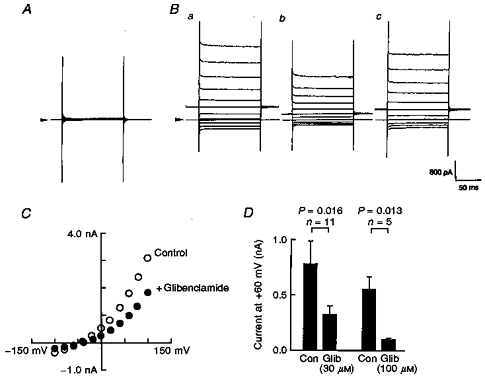Figure 3. Glibenclamide inhibited cAMP-induced whole-cell currents in the CFTR-transfected cells in a concentration-dependent manner.

In order to isolate the Cl− conductance, all the K+ ions were replaced with Cs+ ions. A and B, representative whole-cell current traces measured in the absence (A) or presence (B) of cAMP (1 mm) in the pipette solution. Holding potential was 0 mV, and step pulses of ± 100 mV with 20 mV steps were applied. Arrowheads indicate the zero current level. Note that the holding potential was different from that employed in the experiments of Figs 1 and 2. Glibenclamide (30 μm) reversibly inhibited the intrapipette cAMP-induced Cl− conductance (Bb and c). C, two I-V relationships taken from the experiment shown in B (^, before, and •, after application of glibenclamide). D, bar-graphs showing the effect of glibenclamide (Glib; 30 μm and 100 μm) on the cAMP-induced whole-cell curents. Membrane current amplitudes were measured at +60 mV test potential and were compared before (control, Con) and after application of glibenclamide. Vertical bars indicate the standard deviation. n, number of observations. P values were calculated by Student's paired t test.
